5 Common Yoga Mistakes You May Not Realize You’re Making—and Exactly How to Fix Them
Have you ever felt like you were totally soaring in crow, but then caught your reflection and noticed you were less bird-like and more, well, ready to face plant? The tiniest tweak in your yoga practice can make the biggest difference—not just in how the pose looks, but in how it feels. And if you've ever experienced a life-changing assist from a great instructor, you know the power of a shift in your focus, a twist of the torso, a tuck of the pelvis, or a slight lift of the leg.
The good news: Many so-called mistakes yogis make are super common; you're definitely not alone. The other good news: They're all totally fixable. (There's no bad news. You're welcome.)
The key to improving your yoga practice is to master your form and alignment.
"We like to look at yoga poses holistically, and everybody starts somewhere," says Bethany Lyons, founder of the Baptiste-style studio Lyons Den Power Yoga in New York City. "Is your first down dog going to be in perfect alignment? Probably not. But you have to start somewhere." The key to improving your yoga practice—to nail both the basics and those Insta-amazing moves you see in your daily feed—is to master your form and alignment, which will lead to "more power, freedom, strength, and longevity," Lyons says.
"If you set your body up for success, not only will you be able to practice, but you'll also be able to do it longer. Yoga is a lifelong practice, and if you're always working in misalignment, you're setting yourself up for injury, which will take you out of the game completely," she says.
Whether you're new to yoga or you're a seasoned practitioner, it's common to go into default-mode with certain poses. But making some minor adjustments can make a major difference next time you're on your mat. (And remember, if this were easy and each pose could be "perfect," they wouldn't call it a practice.)

{{post.sponsorText}}
Keep scrolling for how to make your yoga game even stronger.
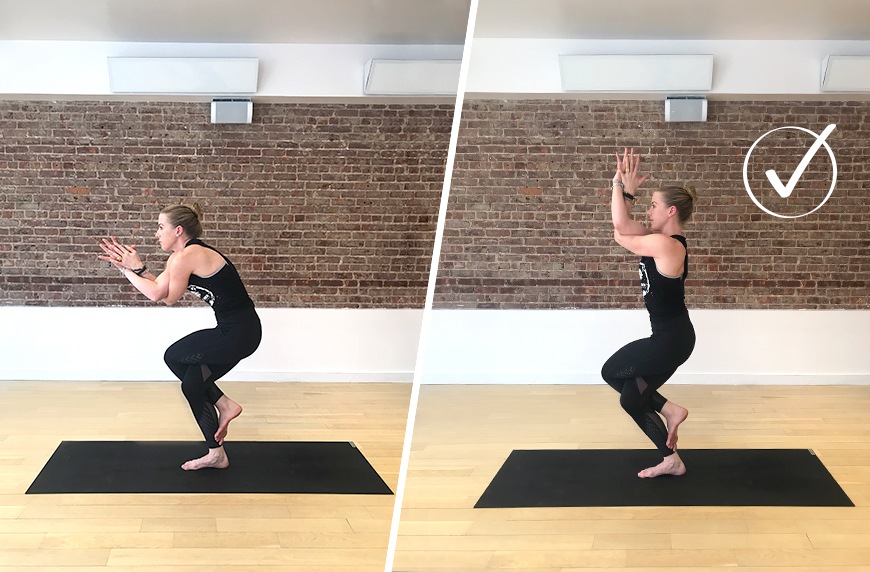
Eagle
The default: Your upper body is collapsed, your spine is rounded, your shoulders are forward, and your neck is crunched.
How to up your game: Draw your thoracic spine ( between your upper and middle back) in, keep your elbows off your chest, draw your shoulders down your back, keep the back of the neck long, and don't jut your chin toward the ceiling.
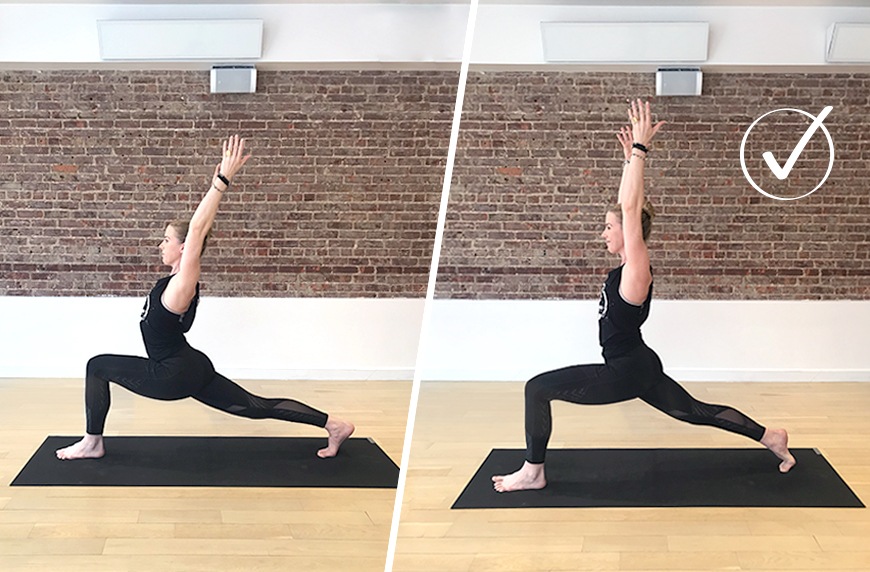
Crescent lunge
The default: Your back heel isn't lifted, you're sinking into the lower back, your pelvis is tilted forward, and you have "tightrope feet," where the front and back foot are in line with each other instead of hips-width distance apart.
How to up your game: The back heel should be pulled forward, with the heel bone over the ball of the foot. Squeeze your back thigh, and keep a slight bend in the back knee to lift the front of the pelvis as the tailbone descends, then reengage the back leg. Lift through the pelvic floor muscles to create a neutral position instead of a sway back, and when you step into the pose, keep your feet hips-width distance apart, not directly in front of each other.
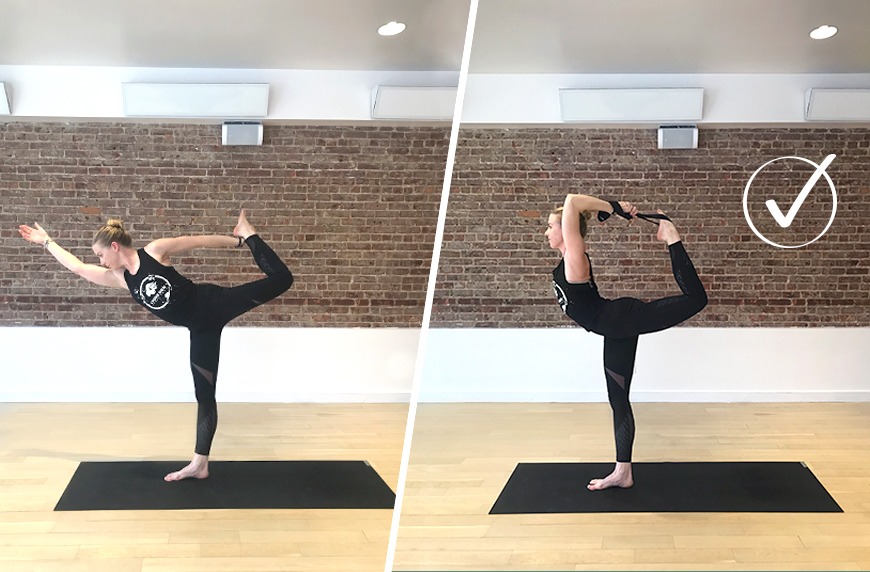
Dancer
The default: Your hips are open instead of squared to the front of your mat, you're drawing one shoulder forward while the other is being pulled back ("that'll ruin your shoulder," Lyons says), your standing leg is locked, your pelvic muscles aren't engaged, and you're using a funky grip to hold your raised leg.
How to up your game: Bend your standing leg a little, tilt the front of the pelvis toward your face, and make sure both hips are square. Keep your shoulders integrated and pulled down your back. Don't be afraid to use a strap to help. Grab the top leg with your palm facing out.
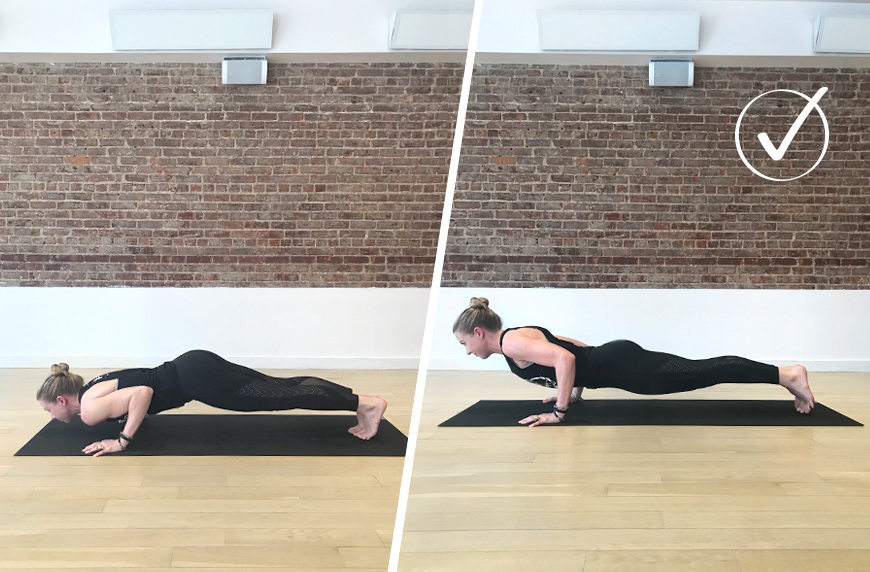
Chaturanga
The default: Your hands are too far forward, your shoulders are collapsed and drop below the elbows, your elbows are hugging in too tight or are underneath your body, and you're leaving your butt in the air.
How to up your game: Keep your hands underneath your elbows, your wrists under your elbows, and your shoulders integrated. As you lower down, don't let your shoulders dip below your elbows. Draw your elbows straight back, keeping them slightly away from the body. Take your hips with you, and keep the pelvis lifted and the legs, quads, core, and pelvic floor engaged.
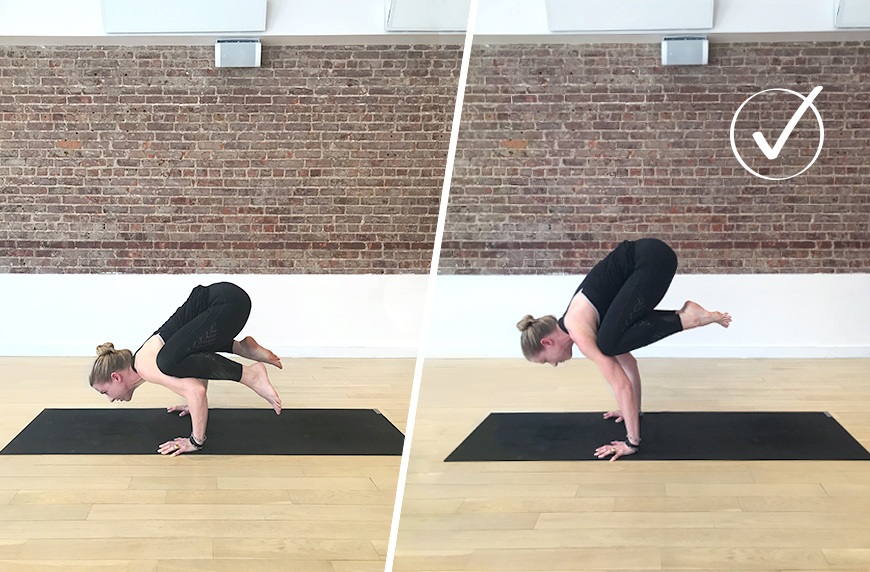
Crow
The default: Your elbows are splayed wide, your hips and body are low to the ground, your feet are apart, your upper back is rounded, and you're crunching or hyperextending the neck.
How to up your game: Start with your feet together, hips high, elbows hugged in to your center line, shoulder-width distance apart. Engage your core muscles, keep your neck long, and your eyes toward the front of your mat without lifting your entire head. Keep the inner edges of your feet touching and your toes active, and as you pull your body in, press down into the mat to lift up.
Now that you've mastered your form, try these five poses that'll help boost your immune system—or your sex life.
Loading More Posts...